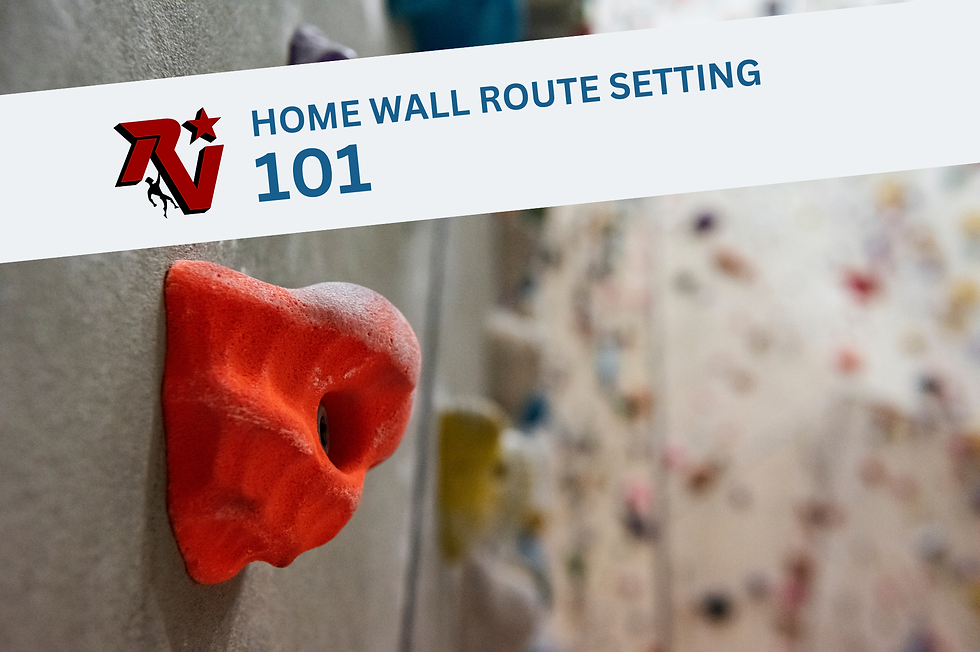To Hang or Not to Hang: The Pros and Cons of Hangboarding vs. No-Hanging
- Dovi Hirsch
- Aug 22, 2022
- 3 min read
Updated: Nov 30, 2022
by Christopher Schafenacker

Ok, first things first: any climber who wants to climb as hard as their genetic potential will allow needs to hangboard at some point. Finger strength is, perhaps, the only aspect of climbing fitness better trained off the wall rather than on, and yet this doesn’t mean that hangboarding will always be good for your climbing. To hang—or not to hang—is a question of timing, in both the macro and micro sense. Not every climber should hangboard (yet) and no one should hangboard at every stage of their training cycle.
When (and How) to Hang
Beginner and intermediate climbers don’t need to hangboard.
If you’re new to climbing, the best way to improve is simply to climb. This is true whether you’re working 5.5 or 5.12, and regardless of what your local gym-rat crusher proclaims. Start hangboarding any sooner than two years into your climbing career, and you might as well start reading about injury recovery now. Muscles gain strength quicker than connective tissue, after all, so too much hangboarding too soon is a recipe for injured fingers, shoulders, and elbows.
Moreover, hangboarding–no matter the grade you climb—won’t make you a better climber. It will simply make you a better hangboarder. Yes, you will gain finger strength and while this may mean you can muscle up a few routes you couldn’t muscle up before, true improvement only comes when new strength is integrated with technique.
Your body needs to learn how to use those gains in strength, and this only comes with practice. If you don’t have the technique required to make use of tendons of steel, having them won’t get you very far. As a rule of thumb, at least 70% of your climbing training should be spent actually climbing, with the other 30% used for antagonist and supplementary training, including hangboarding.
The above notwithstanding, one day you will come upon a sequence that, despite all of your finessing, simply won’t go. You’ll be able to see the beta, you’ll know it’s possible, but you won’t be able to hold on long enough to move between the holds. This is your cue to start hangboarding.
Every good hangboarding plan is, well, planned. Periodically busting out a few sets on your gym’s board or hanging lazily after a hard session won’t do anything more than extend your recovery time. Effective hangboarding means taking a targeted, cyclical approach. Whether you're training on a traditional board (like the Rock-Stah) or using free-weights and a pinch block, before you start you need to map out the grip types you aim to train and the protocol you will undertake. In an ideal world, this would involve cycles of hypertrophy, max. strength, and power, separated by rest weeks where you do no hanging at all. The ratio of what to train, when, and for how long is an individual matter that depends on age, experience, skill level, and available time. Your best resource for sorting through all of this is a credentialed and experienced coach.
Featured Climbing Training Gear
Maverick: The on-the-go, bring it anywhere hangboard. On a family road trip to keep your fingers in shape. We like to bring this to the crag with us to keep our fingers warm—without losing skin on mediocre warm-ups—at that steep, thuggy sport crag.
The Rocket Wall: Available in 6’ and 8’ widths, it’s been tough for us to keep up with the demand for this innovative home climbing wall solution. Slightly overhanging, the Rocket Wall is big enough to set routes on, or to build a systems board.
The Rock-Stah: Our handcrafted version of a traditional hangboard, with curving crimp rails to help alleviate unnecessary strain on your pulleys. Because ain’t no one got time for a finger injury…
The Rocketeer Wall: our free-standing adjustable solution for those who can’t mount a hangboard anywhere in their home or apartment—or who are limited on space. The Rocketeer gives climbers the additional option to set specific climbing holds. Recreate the crux holds of your proj and get ready to send, bruh.











Comments